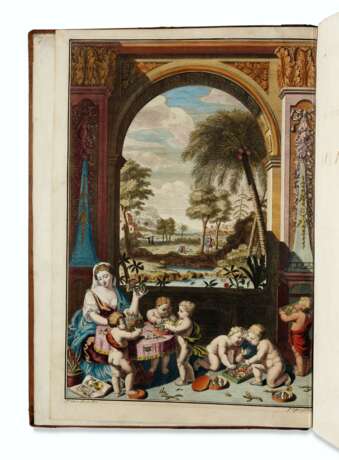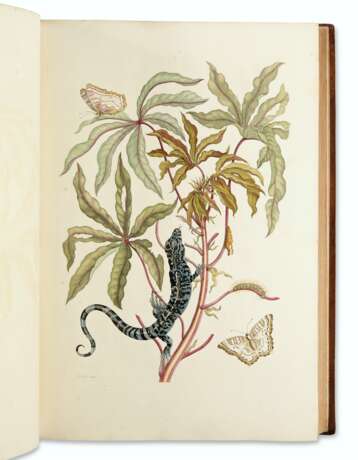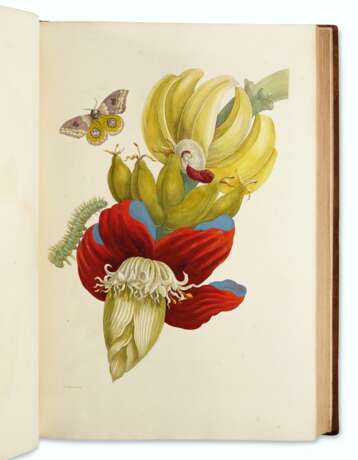ID 479167
Lot 157 | MERIAN, Maria Sibylla (1647-1717) Dissertatio de generatione...
Estimate value
$ 80 000 – 120 000
The famous treatise on the insects of Surinam by the naturalist-artist Maria Sibylla Merian, interleaved with a manuscript translation by writing master William Chinnery. Born in Frankfurt in 1647, Merian was the daughter of the engraver Matthäus Merian and step-daughter of the flower painter Jacob Marrel. She studied miniature painting under her step-father’s pupil, Abraham Mignon, and became interested in insects from an early age, capturing and drawing specimens from life. Merian’s scientific work is notable for its accurate observation of insect life and transformation in an age when spontaneous generation was still widely accepted. After divorcing her husband, Merian and her two daughters spent a period of time living with the Labadist religious community at Castle Waltha, which contained a fine collection of tropical insects brought back from Surinam (then Dutch Guiana) by Cornelius van Sommerdijk.
Inspired, she traveled to Surinam with her daughter Dorothea in 1699. The women spent two years recording insects and plants, often aided by enslaved Africans and Indigenous people who brought them specimens and contributed traditional knowledge about their properties. The resulting book is “easily the most magnificent work on insects so far produced ... her portrayals of living insects and other animals were imbued with a charm, a minuteness of observation and an artistic sensibility that had not previously been seen in a natural history book” (Dance). First published in 1705, this expanded second edition was printed after her death in 1719, with the addition of 12 plates after her elder daughter Johanna. J. Landwehr, Dutch Books with Coloured Plates, 131; Nissen BBI 1341; Sitwell, p. 119. See Peter Dance, The Art of Natural History, pp. 50-51.
Folio (482 x 337mm). Engraved frontispiece and 72 engraved illustrations, all hand-colored; engraved vignettes (slight worming at lower gutter, occasional spots and stains, some light toning). Text interleaved with calligraphic manuscript translation by William Chinnery, dated 1734. Eighteenth-century reversed calf (rebacked, corners repaired). Provenance: sold by Thomas Osbourne (sale 29 May 1749, lot 164) – Lord Wenman (probably Philip, 7th Viscount, 1742-1800; armorial bookplate).
| Address of auction |
CHRISTIE'S 8 King Street, St. James's SW1Y 6QT London United Kingdom | |
|---|---|---|
| Preview |
| |
| Phone | +44 (0)20 7839 9060 | |
| Buyer Premium | see on Website | |
| Conditions of purchase | Conditions of purchase |






